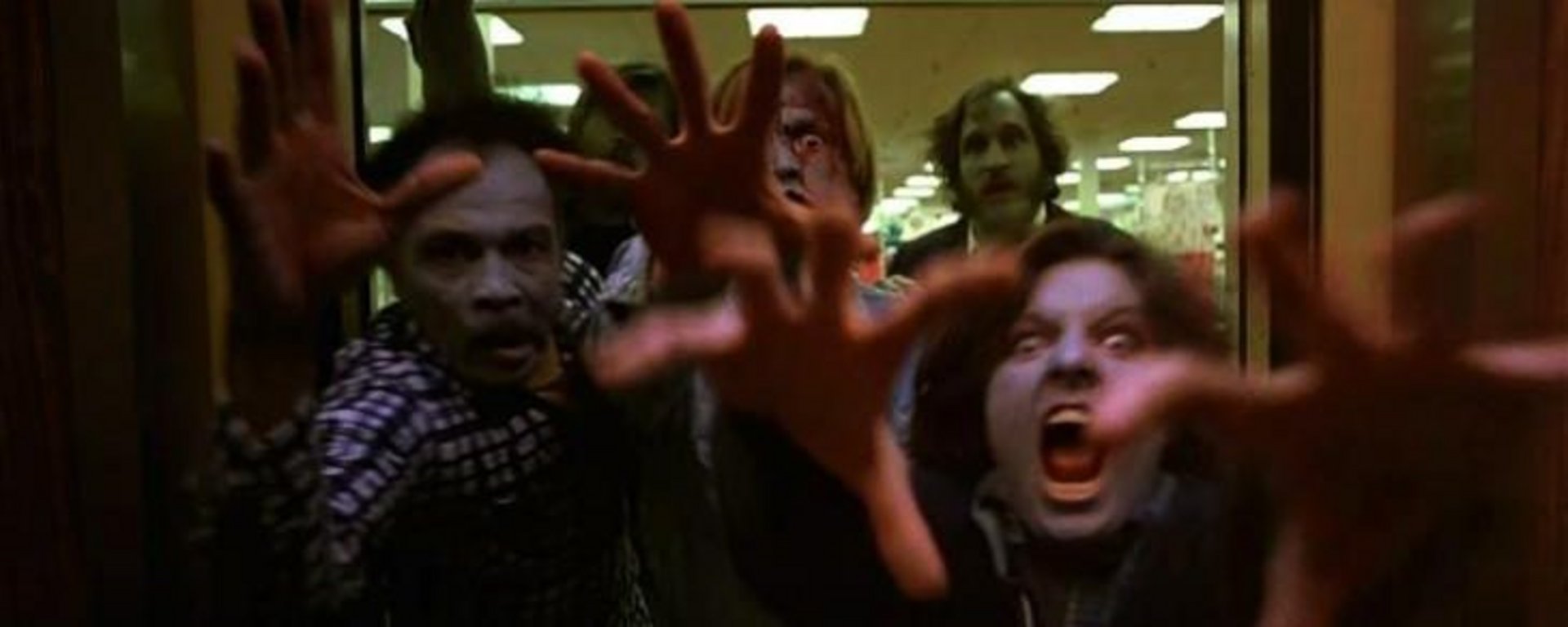
Dawn Of The Dead
American film director George A. Romero built his reputation on being the creator of the modern horror zombie movie. His debut feature Night Of The Living Dead (1968) redefined the genre, introducing new levels of graphic violence that were to influence cinematic trends throughout the 1970s and 1980s.
However, it took Romero another ten years to construct a follow-up to the film, in which time he produced a string of critically acclaimed box office failures (Martin, The Crazies) and increasingly found it difficult to find funding for his projects. It was also during this period that special effects began to take on new levels of realism and the public’s expectations of what the modern horror genre offered increased.
Dawn Of The Dead saw Romero back on safe ground - graphic depictions of human evisceration, exploding heads, and gruesome flesh eating! Its premise was familiar to fans of the first one – for unexplained reasons, a plague of zombies were scouring earth on a hunt for human flesh – but it contained no characters or settings from its predecessor. In Dawn of the Dead several survivors of the outbreak barricade themselves inside a suburban shopping mall and do their best to stave off the zombies.
Many critics read the narrative as a satirical commentary on consumer culture, whilst others were appalled by the strength of the visceral special effects. Influential U.S critic Roger Ebert claimed it was “one of the best horror movies of all time…nobody ever said art had to be in good taste”.
Dawn Of The Dead was submitted to the BBFC for classification in June 1979 – seven months after the film was released unrated in the US. It is probably true to say that the film arrived at the Board with a certain amount of notoriety; two trailers had previously been submitted and both had suffered cuts. The film was seen by six examiners and the then Director of the BBFC, James Ferman.
The examiners unanimously disliked the film, whilst at the same time acknowledged that Romero had displayed some technical flair in creating pace and atmosphere. Much discussion was given over to the moral framework of the film – were the zombies sentient beings or unfeeling objects; was the violence mitigated by the fact that the zombies are no longer human beings; was the audience being invited to indulge in the killings because the zombies ostensibly felt nothing? One examiner felt so strongly that the film glorified violence that he excluded himself from any further screenings or discussions surrounding the work.
One thing that all the examiners and James Ferman agreed on was that the 125 minute submitted version would have be cut before being released to the general public. Ferman stated that the film featured violence perpetrated against people which was “to a degree never before passed by the Board” and subsequently issued a cuts list that amounted to approximately 55 separate cuts (two minutes 17 seconds). These included images of zombie dismemberment, the machine gunning of a child zombie, a sword cutting open a zombie’s head and most infamously, a slow motion shot of a zombie’s head exploding.
The following month a cut version of the film was re-submitted for re-examination and this time another team of examiners viewed the film. All of the examiners still disliked the film and some were convinced that cutting was not the solution to alleviating the possible desensitising effect that the film might have on vulnerable audiences. Despite this view, the suggestion of further extensive cuts was made and the film was once again seen by James Ferman, who subsequently issued a further one minute 29 seconds of cuts to more scenes of gory detail. At this point the distributor (Target International Pictures) was worried that the film would not be ready in time to be screened at the London Film Festival, so James Ferman suggested that the BBFC’s in-house editor create a version that would be acceptable within the guidelines of the X certificate.
In September 1979 Ferman wrote to the distributor exclaiming that “a tour de force of virtuoso editing has transformed this potential reject from a disgusting and desensitising wallow in the ghoulish details of violence and horror to a strong, but more conventional action piece…The cutting is not only skilful, but creative, and I think it has actually improved a number of the sequences by making the audience notice the emotions of the characters and the horror of the situation instead of being deadened by blood and gore”.
When the work was first submitted for classification for video in 1989 it arrived in its post-BBFC censored version, now clocking in at 120 minutes 20 seconds. However, under the Video Recordings Act 1984 (VRA) , the film was to be subjected to another 12 seconds of cuts to scenes of zombie dismemberment and cannibalism. In 1997 Dawn Of The Dead was picked up by a new distributor (BMG) who took the decision to submit the film in its original uncensored state, with a running time of 139 minutes.
This time the BBFC only insisted on six seconds of cuts. However, it was in 2003 that the film was finally passed at 18 uncut by the BBFC, with the examiners feeling that under the 2000 BBFC Guidelines it was impossible to justify cutting the work – the film contained no material that was unprecedented and that it had in many ways been surpassed by more recent 18 rated horror films such as 28 Days Later and House Of 1,000 Corpses.
2004 saw the release of Zack Snyder’s remake of Romero’s Dawn Of The Dead, which proved to be an altogether more gruesome and graphic affair. However, the BBFC still passed the film 18 uncut.